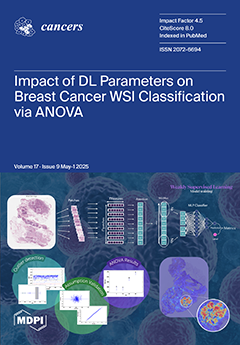Background/Objectives: The use of HER2-targeted therapies has significantly improved survival outcomes in metastatic hormone receptor-negative, HER2-positive (HR−/HER2+) breast cancer. However, factors influencing their adoption remain unclear. This study examines clinical, sociodemographic, and facility-related determinants of HER2-targeted therapy utilization in metastatic HR−/HER2+ breast cancer.
Methods: We conducted a retrospective cohort study of metastatic HR−/HER2+ breast cancer patients from the NCDB (2013–2020), categorizing them into HER2-targeted therapy recipients and non-recipients. Patients with missing key variables were excluded. Time periods were divided as pre-2015, 2016–2018, and 2019–2020 to reflect evolving treatment availability and uptake in the United States. Univariable and multivariable logistic regression identified factors associated with HER2-targeted therapy use. Cox proportional hazards regression and log-rank tests assessed overall survival.
Results: Among 3060 metastatic HR−/HER2+ breast cancer patients, 2318 (75.8%) received HER2-targeted therapy. HER2-targeted therapy utilization increased from 64.6% in 2013 to 80.9% in 2016, marking an early period of rapid uptake. Usage remained consistently high from 2016 to 2018, followed by a slight decline and stabilization around 75% from 2019 to 2020. Factors positively associated with therapy use included diagnosis in 2016–2018 (OR 1.93,
p < 0.001) and 2019–2020 (1.88,
p < 0.001), private insurance (OR 1.76,
p < 0.001), and treatment at academic facilities (OR 1.39,
p = 0.031). Reduced likelihood of therapy use was observed in patients aged 71+ (OR 0.52,
p < 0.001), Black race (OR 0.78,
p = 0.018), Medicare insurance (OR 0.64,
p < 0.001), and treatment at rural facilities (OR 0.59,
p = 0.022). HER2-targeted therapy was associated with significantly improved survival (median 5.08 vs. 1.27 years, log-rank
p < 0.001) and lower mortality risk (HR 0.52,
p < 0.001).
Conclusions: The adoption of HER2-targeted therapy has increased in recent years, yet disparities persist in access and utilization. Our findings highlight the need to address sociodemographic and facility-related barriers to ensure equitable treatment and improved survival outcomes for all patients.
Full article






